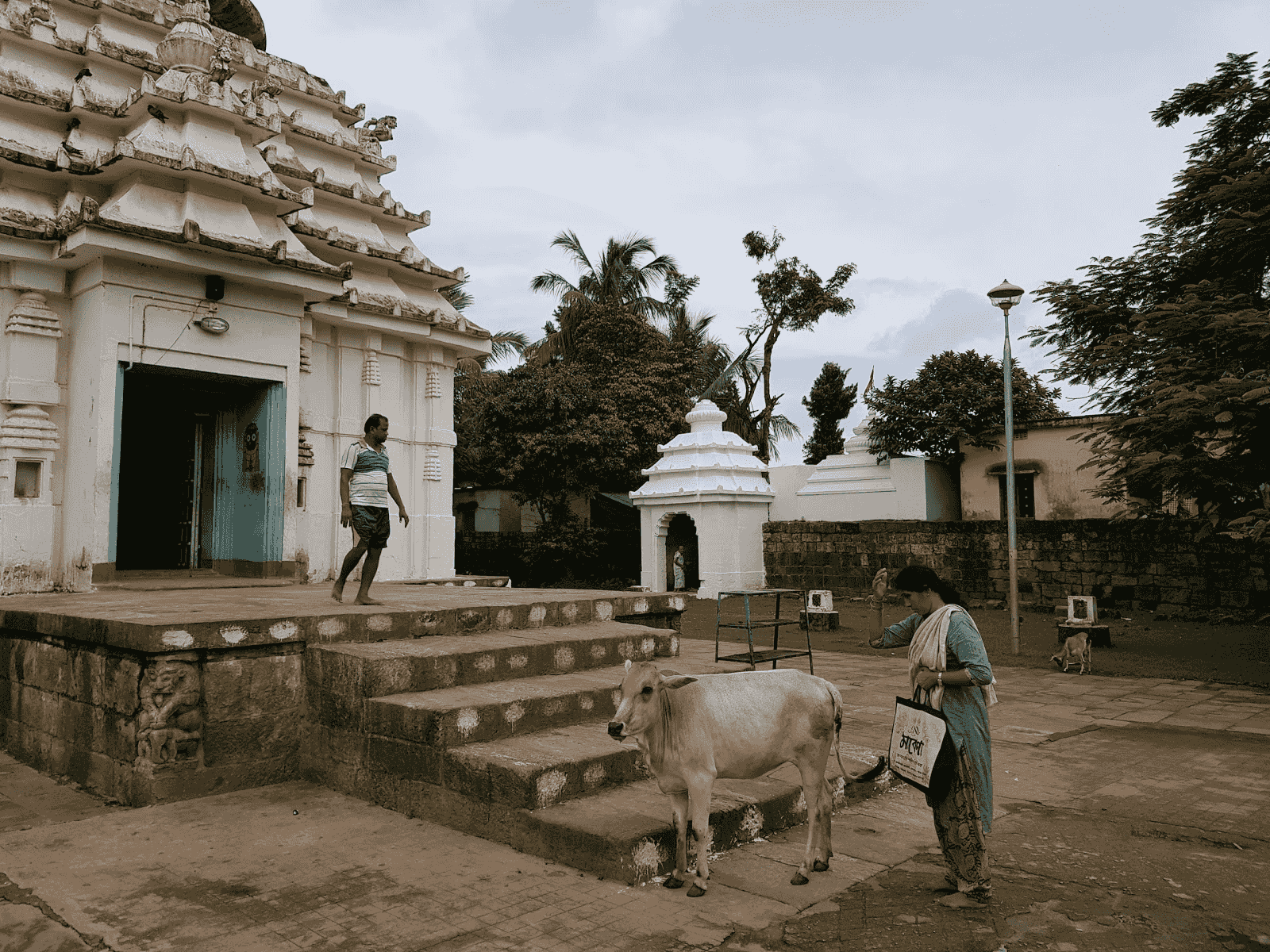Located in the ancient city of Jajpur in Odisha, Biraja Devi Temple is one of the most revered 51 Shakti Peethas of India. According to legend, during Lord Shiva’s grief-stricken journey carrying Sati Devi’s body, different parts of her body fell across the Indian subcontinent, forming sacred Shakti Peethas. At Biraja Devi Temple, it is believed that Maa Sati’s navel fell, making the temple a powerful center for devotion, worship, and spiritual energy.
The temple attracts devotees from across India and abroad, offering a unique combination of mythology, history, culture, and spiritual significance. It is not only a place of worship but also a site that embodies the cosmic energy of Maa Shakti, particularly symbolizing creation, life, and sustenance.
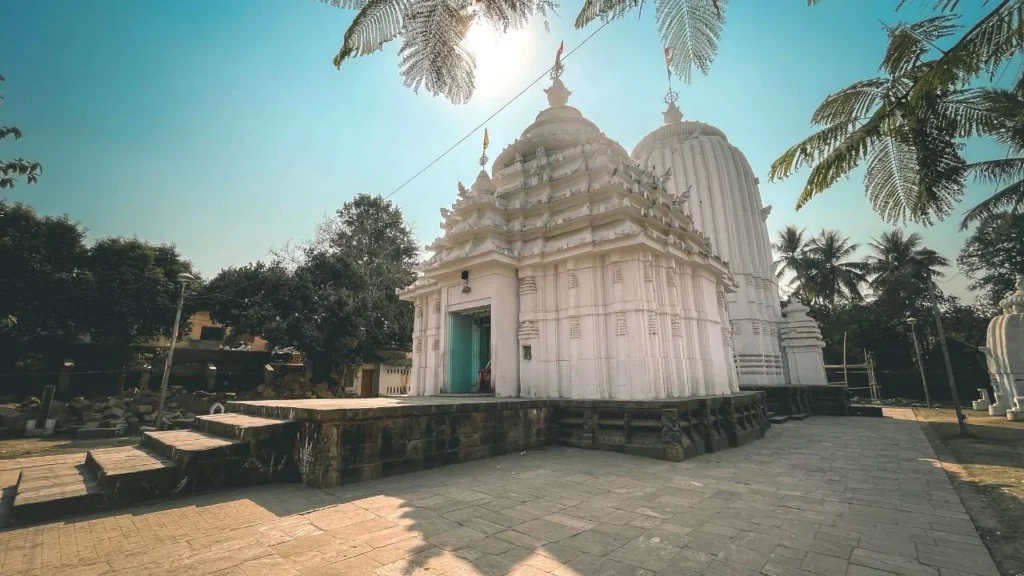
Mythological Significance
The story of Biraja Devi Temple is deeply connected to the legend of Sati and Shiva:
- Sati Devi, unable to bear the insult to her husband by her father Daksha, self-immolated at the grand yajna.
- Lord Shiva, in sorrow, carried her body across the cosmos.
- To stop his grief from disturbing the universe, Lord Vishnu used the Sudarshan Chakra to dismember Sati’s body.
At Biraja Devi Temple, it is said that Maa Sati’s navel fell, symbolizing:
- Creation and sustenance: The navel represents the origin of life and nurturing energy.
- Fertility and prosperity: Devotees believe that worshipping here blesses them with abundance, health, and success.
- Spiritual growth: The site emphasizes connection with life force, energy, and divine wisdom.
The temple is thus a powerful center for Shakti worship, where devotees seek blessings for life, prosperity, and spiritual awakening.
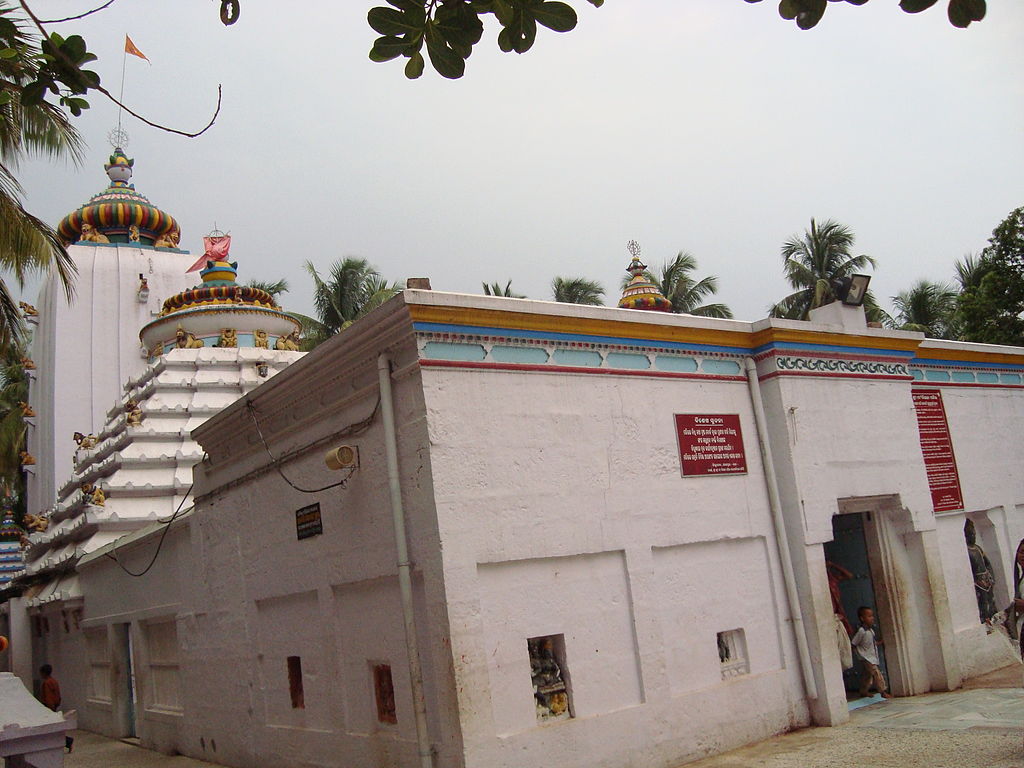
Historical and Cultural Background
Biraja Devi Temple is steeped in history and cultural heritage:
- The temple is believed to date back several centuries and has been mentioned in ancient scriptures and local chronicles.
- It is a key center of Shakta worship in Odisha, attracting pilgrims from different parts of India.
- The temple’s rituals and traditions have been preserved over generations, maintaining its spiritual sanctity.
- Biraja Devi Temple has also played a significant role in Odisha’s cultural identity, blending religion, mythology, and local traditions.
Over time, the temple became a spiritual hub, emphasizing the worship of Maa Shakti’s creative energy, symbolized by her navel, which is central to the cycle of life.
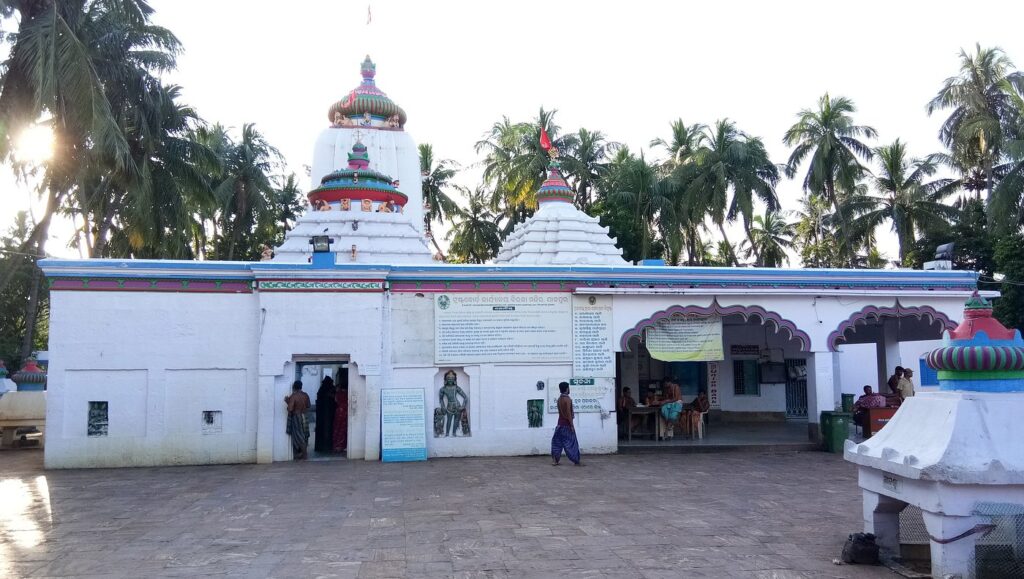
Temple Architecture and Layout
The architecture of Biraja Devi Temple reflects traditional Odishan style, combining grandeur with spiritual focus:
- Sanctum Sanctorum: Houses the idol of Maa Biraja Devi, representing the navel as the center of life and energy. Devotees focus their prayers here for blessings related to fertility, prosperity, and spiritual growth.
- Temple Courtyard: Offers space for devotees to perform pradakshina (circumambulation), rituals, and meditation.
- Mandapa and Pillared Halls: Accommodate devotees during special ceremonies and festivals.
- Natural Surroundings: The temple is surrounded by gardens, water tanks, and sacred groves, creating a serene and spiritually uplifting atmosphere.
The design emphasizes focus on the goddess’s energy, allowing devotees to engage deeply in worship and experience the divine presence.
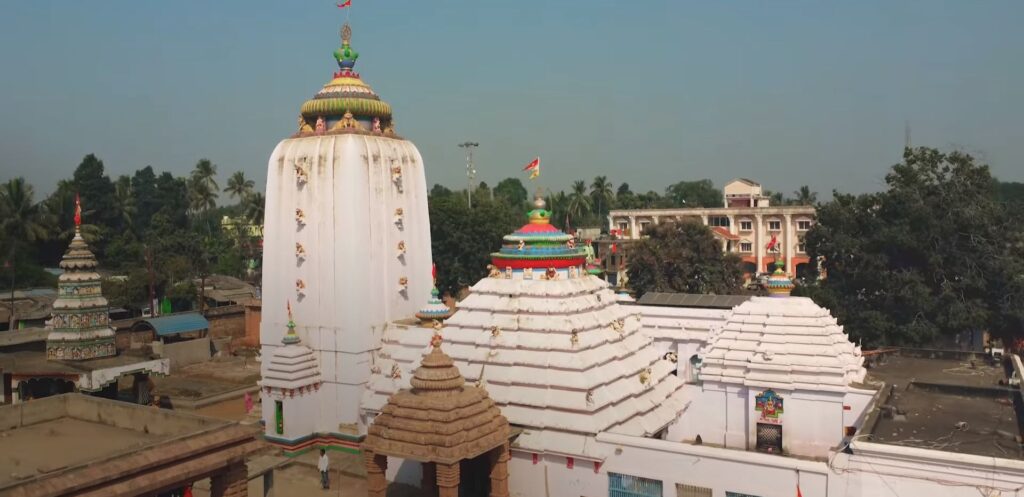
Rituals and Worship Practices
Daily rituals at Biraja Devi Temple revolve around creation, sustenance, and divine energy:
Daily Worship
- Morning and evening aarti with chanting of Shakti mantras.
- Offerings of flowers, rice, and sweets placed near the idol, focusing on the navel.
- Devotees perform circumambulation and meditation to connect with Maa Biraja’s energy.
Festivals
- Durga Puja and Navratri: The temple sees a surge of devotees during these festivals. Special rituals focus on Maa Biraja’s navel, invoking blessings for prosperity and well-being.
- Chaitra and Sharad Navratri: Devotees fast, chant mantras, and participate in communal celebrations.
- Other Local Festivals: Include devotional music, fire rituals, and storytelling about Maa Sati and her divine energy.
Devotee Practices
- Pilgrims often meditate on the creative and sustaining energy of the goddess.
- Worship here is believed to remove obstacles, enhance fertility, and bless devotees with abundance.
- The serene temple environment supports spiritual reflection, focus, and connection with Shakti energy.
The navel of Maa Sati represents:
- Creation and Life Energy: Symbolizes the origin of life, nurturing, and sustaining energy.
- Fertility and Prosperity: Devotees seek blessings for children, business success, and overall well-being.
- Spiritual Awakening: Meditation and prayers at this Shakti Peetha enhance energy, focus, and divine consciousness.
- Protection and Guidance: The goddess is believed to guide devotees in life and protect them from adversity.
Worshipping at Biraja Devi Temple helps devotees experience personal empowerment and spiritual enrichment, as the energy of the navel connects them to the source of life and Shakti power.
FAQs for Biraja Devi Temple
1. Why is Biraja Devi Temple famous?
Biraja Devi Temple is a revered Shakti Peetha, dedicated to Goddess Biraja (an incarnation of Durga), known for its spiritual energy and historic significance.
2. Where is Biraja Devi Temple located?
It is located in Jajpur, Odisha, a prominent religious and historical town.
3. What is worshipped at Biraja Devi Temple?
The temple worships Goddess Biraja, also considered an incarnation of Durga, symbolizing power, protection, and divine energy.
4. What are the temple timings?
The temple generally opens from 6:00 AM to 12:00 PM and 4:00 PM to 8:00 PM.
5. Is photography allowed inside Biraja Devi Temple?
Photography is strictly prohibited inside the sanctum, but allowed in the surrounding areas.
6. What is the significance of Biraja Devi as a Shakti Peetha?
It is believed that the feet of Goddess Sati fell here, making it a sacred site for devotees seeking blessings.
7. How can I reach Biraja Devi Temple?
The temple is accessible by road and rail, with the nearest major city being Cuttack. Local buses, taxis, and autos connect Jajpur to nearby towns.
8. Are there any special rituals at Biraja Devi Temple?
Yes, devotees perform daily aarti, bhog offerings, and Navratri celebrations, which are the most significant festivals here.
9. Is there accommodation near Biraja Devi Temple?
Yes, there are guesthouses and lodges in Jajpur town for pilgrims.
10. What is the best time to visit Biraja Devi Temple?
October to March is ideal, avoiding monsoon rains and enjoying pleasant weather for sightseeing and rituals for Biraja Devi Temple.

